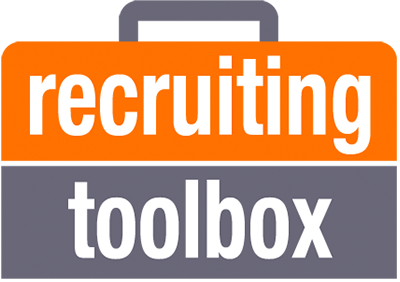Recruiting Toolbox Blog
Three AI-Related Questions Talent Leaders Need to Answer in 2024

With the splash that generative AI has made in the last few months, it’s no surprise that nearly every conversation with talent leaders at some point turns to a discussion about how AI could help companies recruit better, faster, and improve diversity. Inevitably, leaders will ask me what I like and what I think about it.
For my brain to make sense of new topics, I need to understand the big picture before I feel like I can lean into details. So, when you ask me a question about AI tools, I ask questions back about how your company thinks about AI right now, and how the legal team or company executives are communicating about not only AI, but also Diversity, and about overall talent. Why? Because the choices we make are making an impact at scale, and that context really matters. For instance, I thought this recent article from John Vlastelica was thought provoking. I especially liked how he outlined the impact of AI and the need for companies to have a clear and consistent point of view on what’s considered cheating, and how that impacts what talent we hire.
Yes, I love a fun discussion as much as anyone. And as AI becomes more prevalent, I find that many talent leaders are curious or even excited about the possibilities. But recruiters I talk to are concerned, even scared. They wonder whether recruiting will be needed in the future, or whether their job is safe for the next few years until they retire, or whether they will still get to do the parts of the job that they really enjoy. Totally understandable concerns. As talent leaders, it's important that we help shape the future of working with AI, and help our teams prepare for the changes to our work.
You can start by answering three key questions that are on the minds of most business executives as they think about the future of AI and recruiting.
#1: As more AI gets implemented in recruiting, what will the recruiting team be doing?
Personally, I’m excited about the use of AI for recruiting teams because it gets us closer to my dream state – the one where we don’t have to do the repetitive work that usually plagues recruiting. Instead, recruiters have time to be talent advisors and have more strategic discussions. In our work with more than 350 clients, the most common request we hear from business leaders is to help their recruiters be more proactive and aligned to their business. Most of these business leaders tell us they want that kind of partnership with their recruiting partners, but they also acknowledge their recruiters are often spread too thin today.
Companies today can quickly automate the more transactional elements of the recruiting process: managing applications, initial screening, scheduling interviews, generating offers, completing onboarding paperwork, and conducting background checks. Check out these case studies to see how companies like Nestlé and McDonald's have successfully implemented AI in their recruiting processes, which in many cases has reduced process times from many hours to just minutes. And anytime you can give time back to the business, you’re winning.
As AI takes on this transactional work, recruiters also have time to partner more closely with their HR and Diversity partners, perform high-touch proactive recruiting for critical roles, and spend time helping to optimize internal mobility. You know, the work that has so much more ROI than the hours we have traditionally spent chasing candidates or hiring teams to schedule the next step in the process.
#2: As AI does more, do we really need as large of a recruiting team?
At the risk of sounding like a consultant here, the truthful answer is, "It depends." Depending on the type of recruiting you do, the overall size of the team may not necessarily change, but the composition of the team and how team members spend their time definitely will.
You will likely find you need fewer people handling logistics and scheduling, and more team members having more strategic business conversations. But implementation and use of the AI tools themselves may require adding people who are more like data scientists than traditional recruiters. People who are focused on analyzing the data from these tools and prescribing real-time course corrections to continuously tune the AI for our company culture or our focus on diversity and inclusion.
My advice when answering this question? Don’t start by trying to decide the number of people you need. Instead, think about the work that needs to get done and the proper mix of talent you need to do it. Define the work first, then decide what’s realistic in terms of capacity modeling.
Are you only planning for high-volume recruiting? Then you can likely automate 80% or more of the process using existing technology solutions. You’ll find tons of different case studies of companies that have automated nearly all of the high-volume recruiting process and saved their company significant time and money. But you still also have to plan for needing people to handle the things AI can’t (i.e. personally answering sensitive candidate questions or concerns, helping ensure consistent and fair decision making, etc). These team members will need to be able to effectively work across a larger scope of the business, be great problem solvers, and be great communicators.
Are you doing more executive hiring or hiring unicorn-type skillsets that expect more personal interactions? Then you’re likely to need a high-touch process, which, by design, you may only want to be 50% automated. And as we know, this talent demands high-performing recruiters and hiring teams, so we can’t scale back on recruiting talent here.
Most of all, when answering questions about the size of the team, be realistic and always request the actual number of people you need to be successful. "Our goal is to achieve X, Y, and Z, and that will require this number of team members and other resources such as...." If the business wants you to operate with fewer people and other resources, then be transparent about what's realistic and negotiate the goals. "If we only had that number of team members, we would need to prioritize very carefully to achieve part of those original goals. For example, we could likely do most of X and Y, but not any of Z." We need to be clear about what is required to achieve the company’s goals.
#3: How do we know our recruiting team members are ready for this change?
When managing this scale of change, we need to help our teams prepare for the challenges that are associated with the rise of AI. Here are three simple steps we recommend to help get your team ready for this future of work:
- Evaluate current state. Assess your team members for the different skills and competencies required of Talent Advisors. Download this free Recruiting Toolbox Talent Advisor Diagnostic Tool and use it with your recruiters, and have managers design a plan to build the needed skills and competencies that each recruiter needs to develop.
- Develop your team with formal training. You can always hire a firm like ours to design customized Talent Advisor and/or Recruiting Leadership Lab workshops for you. We've developed and delivered this kind of training to over 100 clients around the world, and we see it improve both the skills and confidence of the participants. With all the change occurring, we’re seeing more requests for Talent Advisor and Recruiting Leadership Lab workshops now than ever before.
- Develop your team using internal experts. The good news is that you don’t have to go outside your own company or spend money on consulting firms to develop your team. Leverage your own internal experts to do monthly learning sessions with the team, or set up a mentoring program for your recruiting team, or bring in HR and Diversity partners to your team meetings to discuss best practices for stakeholder management. All of these are options you can do internally to help upskill your team.
Talent leaders need to help shape the future
As the use of AI continues to grow, talent leaders need to be prepared to guide both business leaders and their own teams through this transformational time. If you aren’t sure where to start, I’d recommend you begin with Understanding AI in HR: A Deep Dive from Bersin and a report specifically about AI in Talent Acquisition from Harvard Business Review, which is offered, courtesy of Paradox, here. By being prepared to answer these three questions, talent leaders can start to shape the future of recruiting and ensure we have set teams up to thrive in the age of AI.
Are you ready to share some of your lessons learned and best practices? Go to the LinkedIn version of this post to share examples of steps you're taking to help your team prepare for this change, and how you are facilitating this conversation with your business leaders.
© Recruiting Toolbox, Inc.
No duplication or re-posting without express written permission of Recruiting Toolbox, Inc. - contact us at www.RecruitingToolbox.com/
